Reports suggest that he may have understood apologies, the application of pronouns and the concept of “zero”. All of these accomplishments are made more impressive because Alex was a parrot – an African grey parrot, to be precise. Alex and his ilk belong to the order Psittaciformes – one of the world’s most fascinating, intelligent, and threatened bird groupings. The Psittaciformes order encompasses over 400 species belonging to at least 101 genera, including parakeets, macaws, cockatoos, lovebirds, lorikeets and “true parrots”. While South America, Central America and Australasia play host to the greatest diversity, five genera of parrots are found throughout sub-Saharan Africa and on the surrounding islands.
In the wild where they belong, these colourful characters fill forests and savannahs with cheerful voices, constantly communicating with the other members of their complex and sophisticated social groups. So, without further ado, meet the kaleidoscope of African parrots, decorated to the nines in glamorous hues and filled to the brim with personality:
GREY MATTERS: THE PSITTACUS GENUS
Grey parrots are unequivocally the most famous of Africa’s parrot species, though sadly, their notoriety is based more on their desirability as pets than anything else. However, in the wild, they are found predominantly in the primary and secondary forests of West and Central Africa. Here, they gather in noisy flocks to forage and chatter in the canopies or descend to the clearings for a drink and a quick bite of mineral-rich clay.
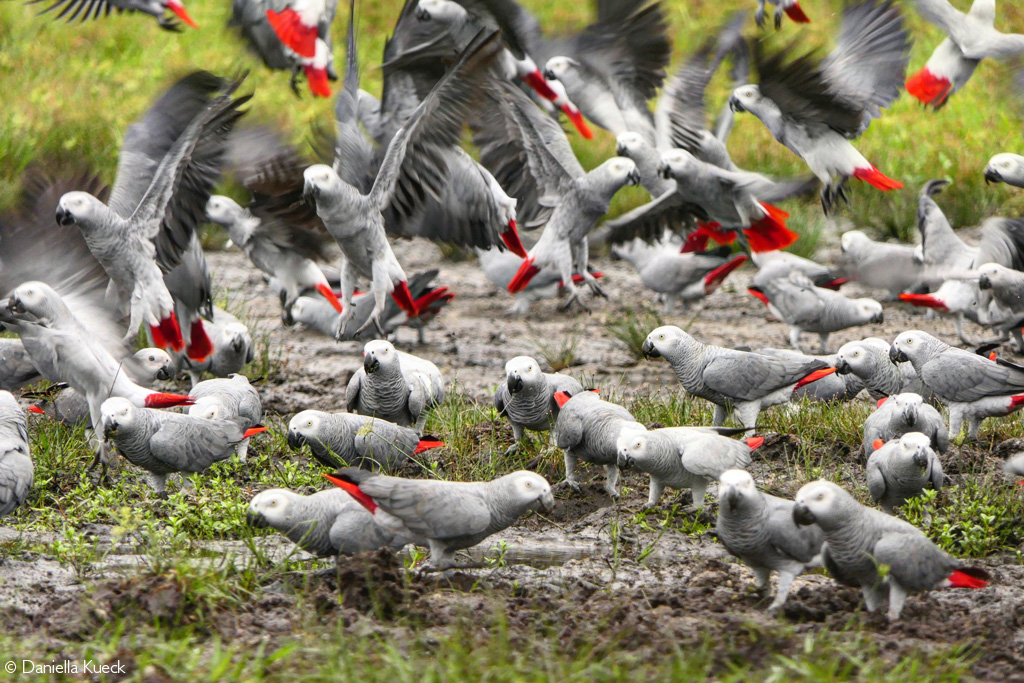
There are two species: the African grey parrot (Psittacus erithacus – also known simply as the grey or Congo grey parrot) and the recently recognised Timneh parrot (Psittacus timneh), which was formerly considered a subspecies. As the name suggests, both species are predominantly charcoal in colour, but the Timneh parrot is darker in colour and sports a maroon tail in contrast to the scarlet feathers of the African grey.
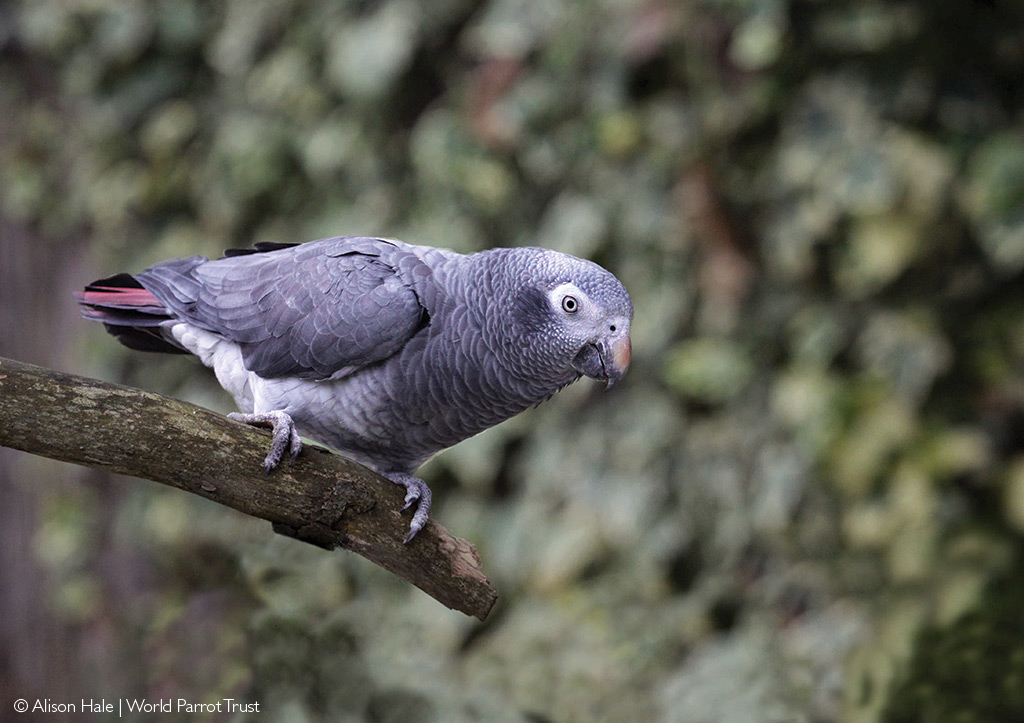
Due to the number of grey parrots in captivity, we know that these birds are highly intelligent, not only in speech and cognition but also in demonstrating emotion-based behaviours such as altruism. Less is known about their wild interactions, but there is no question that this intelligence translates to intricate social complexities and intimate bonds between individuals. Their repertoire reportedly includes over 200 different sounds, and they communicate almost constantly with each other while foraging.
Sadly, the wild grey parrot populations have plummeted over the past few decades to just a shadow of their former numbers (see more below). However, there are still places where one can see them in the wild, especially on the West African island of Príncipe (where they are still found in large numbers) and around the baïs of Odzala-Kokoua National Park.
A FAMILY AFFAIR: THE POICEPHALUS GENUS
Like their close relatives, the grey parrots, the wild parrots of the Poicephalus genus are endemic to Africa. There are at least eleven species, but avian taxonomy remains a somewhat murky and confused world, so that number is likely to change as future research distinguishes separate species. At present, the Poicephalus group includes:
- Cape parrot (P. robustus)
- Meyer’s parrot (P. meyeri)
- Senegal parrot (P. senegalus)
- African orange-bellied parrot (P. rufiventris)
- Brown-headed parrot (P. cryptoxanthus)
- Red-fronted parrot (P. gulielmi)
- Brown-necked parrot (P. fuscicollis fuscicollis)
- Grey-headed parrot (P. fuscicollis suahelicus)
- Rüppell’s parrot (P. rueppellii)
- Yellow-fronted parrot (P. flavifrons)
- Niam-Niam parrot (P. crassus)
The complicated knot of parrot taxonomy is perhaps best explained by the case of the Cape parrot – South Africa’s only endemic parrot species. Until 2017, the Cape parrot, the brown-necked parrot and the grey-headed parrot were all considered subspecies of the same species, P. robustus. Research into the differences, including genetic, physical and behavioural, proved the distinction. Consequently, the Cape parrot was included on the Red List with a more conservative conservation status of ‘Vulnerable’.
 African grey parrots in traditional medicine
African grey parrots in traditional medicine
Those wishing to find the Poicephalus species in the wild will find it a relatively easy task on almost any conventional safari. However, rarer species such as the Cape, Niam-Niam or Senegal parrots will likely require a specialised birding trip in the company of expert guides.

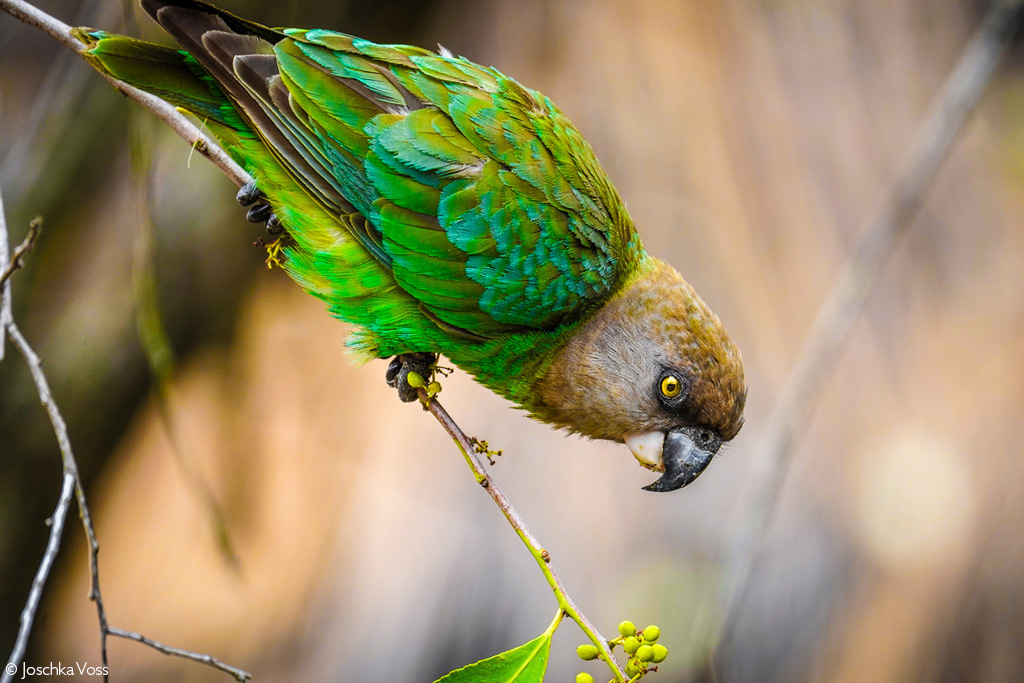
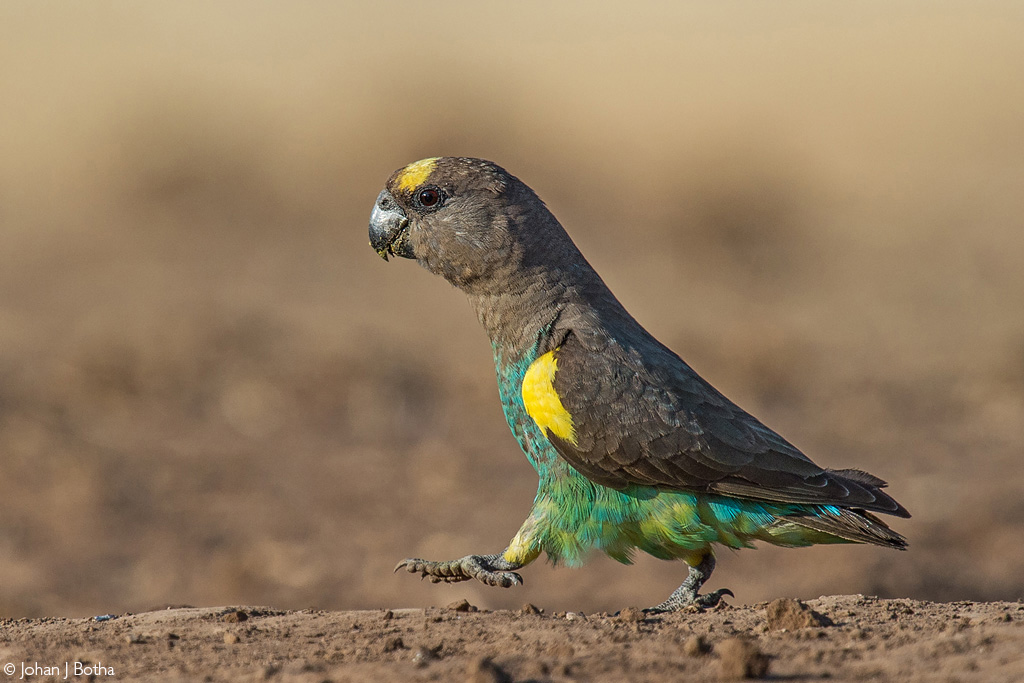


A LOVING CUPFUL OF PARROTS: THE AGAPORNIS GENUS
All nine species of lovebirds are native to Africa. However, their popularity as pets and for aviaries has seen the establishment of feral colonies and hybrid species that exist far outside their natural ranges, including in many parts of the United States.
Members of the Agapornis genus include:
- Rosy-faced lovebird (A. roseicollis)
- Yellow-collared lovebird (A. personatus)
- Fischer’s lovebird (A. fischeri)
- Lilian’s lovebird (A. lilianae)
- Black-cheeked lovebird (A. nigrigenis)
- Black-winged lovebird (A. taranta)
- Red-headed lovebird (A. pullarius)
- Grey-headed lovebird (A. canus)
- Black-collared lovebird (A. swindernianus)
In the wild, most species are geographically separated, so avid birders looking to spot them all will have to travel the length and breadth of the continent. A special trip to the island of Madagascar will also be necessary to find the unique and endemic grey-headed lovebird.
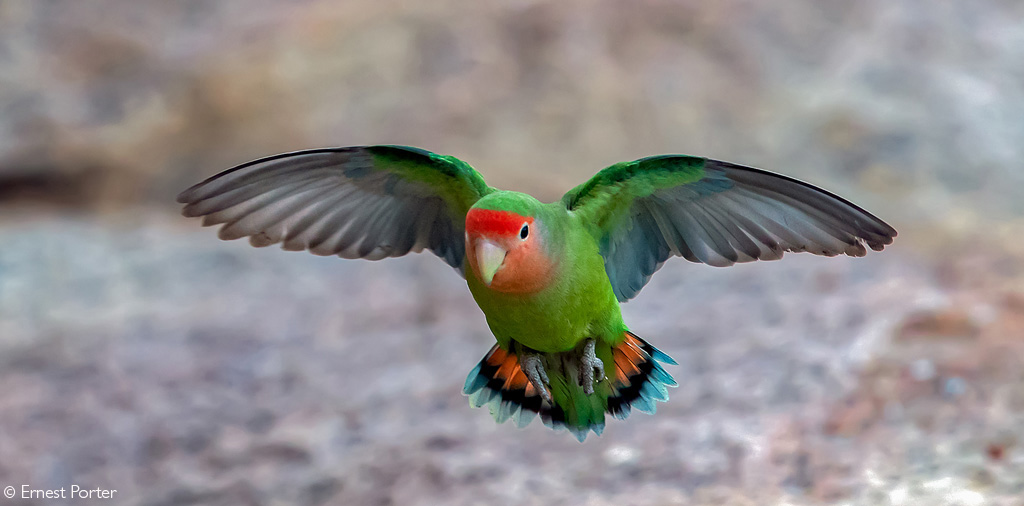
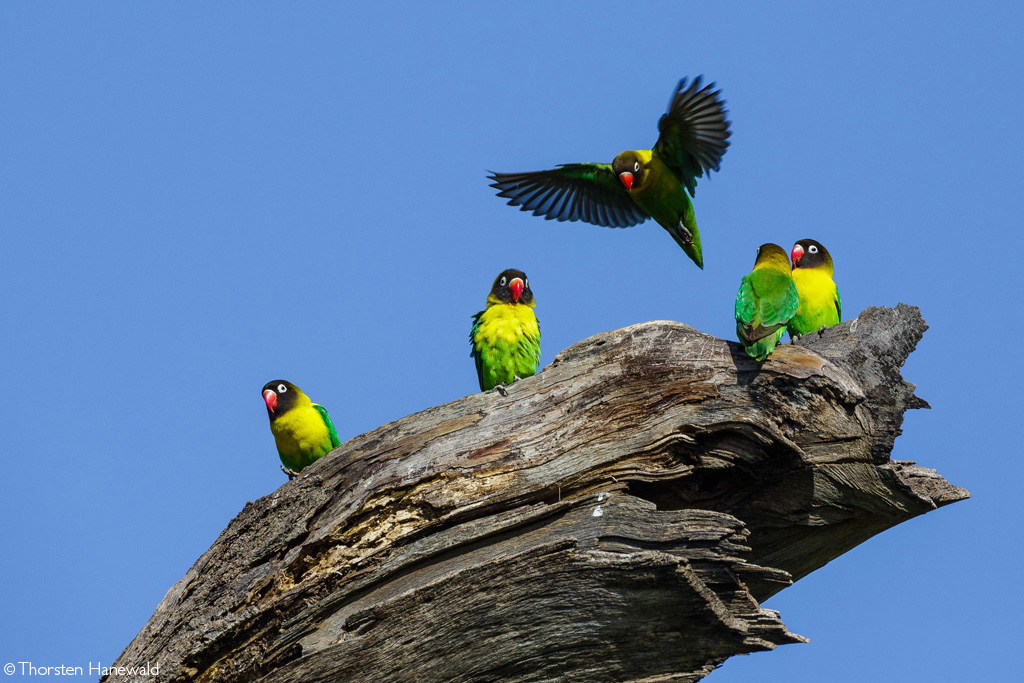
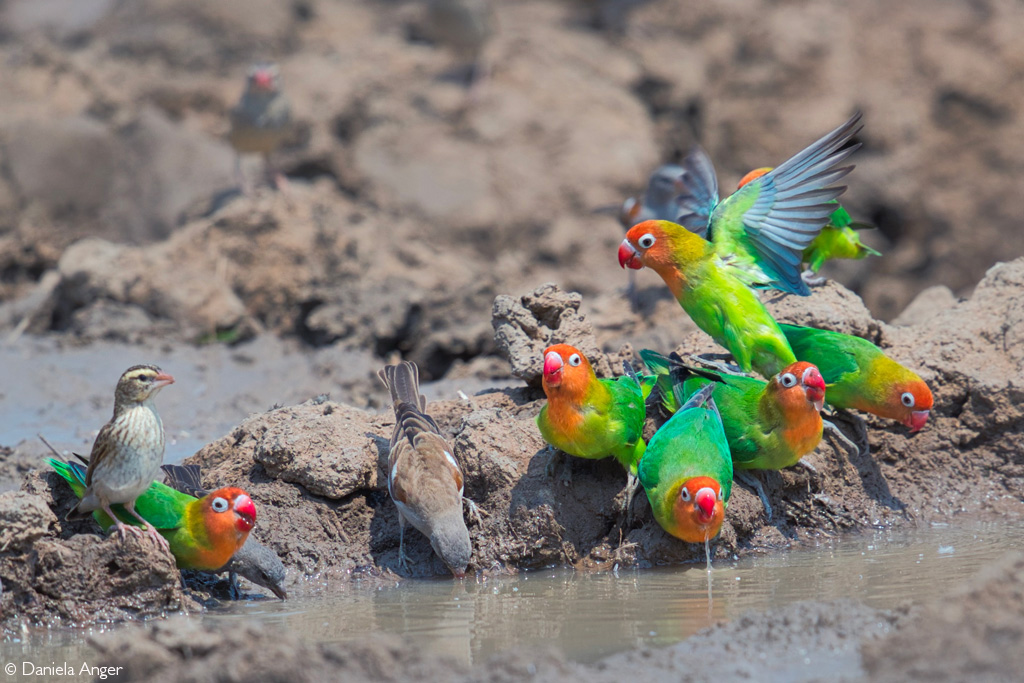
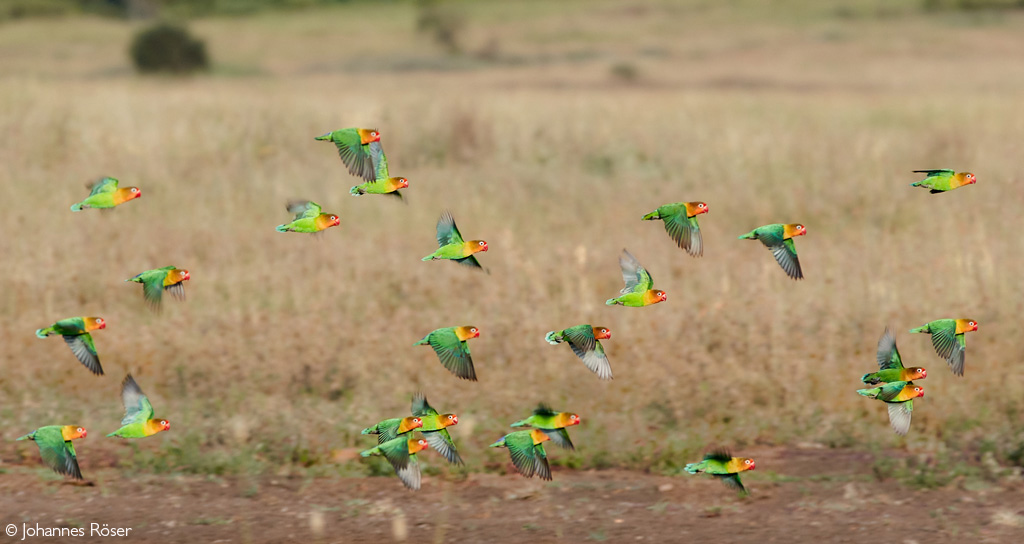
THE LONELIEST PARROT: THE PSITTACULA GENUS
There is only one extant representative of the parakeet genus on mainland Africa: the African rose-ringed parakeet (Psittacula krameri krameri). Its natural range extends from Guinea in West Africa to Uganda and northwards to the Nile Valley.
There is one other naturally-occurring parakeet in the vicinity – the echo parakeet of Mauritius. Sadly, this is the last living parakeet species of the Mascarene Islands. The Réunion parrot, Newton’s parakeet, Mascarene grey parakeet and Seychelles parakeet all became extinct during the 18th century due to human activity.

ISLANDS IN THE SUN: THE CORACOPSIS GENUS
The fifth and final genus of African parrots: the largely unknown group of vasa parrots of Coracopsis. Though some disparity exists as to exact divisions, there are four confirmed species: the greater vasa parrot (C. vasa) and the lesser vasa parrot (C. nigra), both found in Madagascar, along with the Comoros black parrot (C. sibilans) and the Seychelles black parrot (C. barklyi) of their respective eponymous islands.
The members of the Coracopsis genus have several morphological features that set them apart from other parrot species. Their bodies are truncated, their necks long, their plumage without any bright colouration and the genitalia of the males are entirely unique.

A WORD ON THE CONSERVATION OF PARROTS
Globally, parrots are among the most threatened of all bird families, and while a full treaty on their conservation status is beyond the scope of this article, omitting the reality would be remiss. Their attractive looks, intelligence and propensity for mimicry have made them highly desirable as pets. Even with restrictions, the pet trade remains one of the most significant threats to their future. This is especially true for grey parrots, which have been trapped in their millions, but also for several members of the Poicephalus genus, including the Senegal parrot, one of the most frequently caught species in the wild. Their wild populations are also highly susceptible to habitat loss (primarily due to logging) and traditional medicine trade.
















